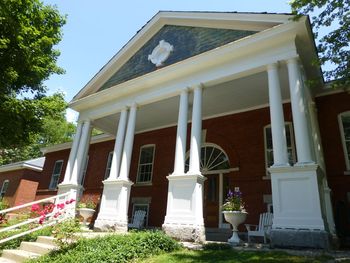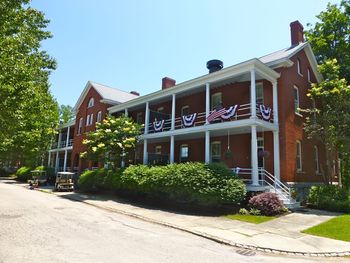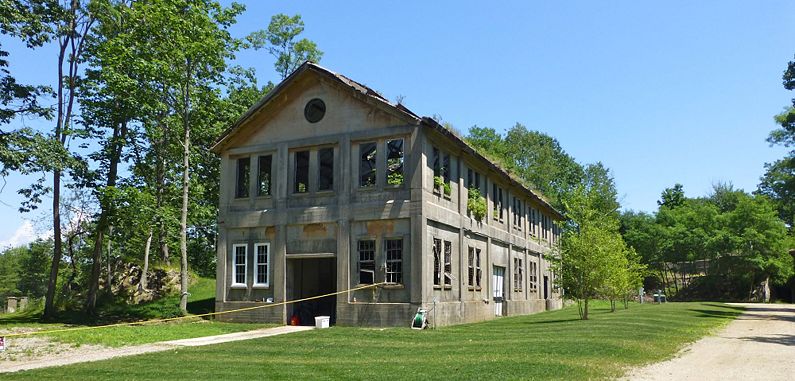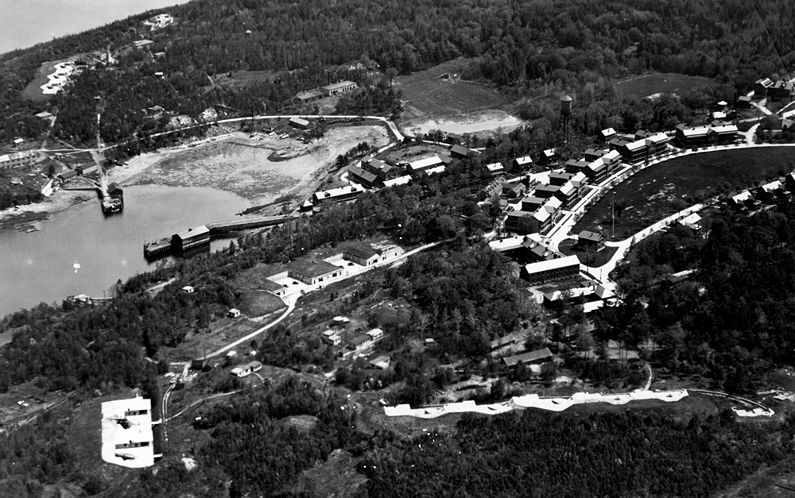Fort McKinley
| More information at Warlike, Wikidata, Wikipedia
Fort McKinley (1896-1947) - An Endicott Period Coastal Fort first established in 1896 on Great Diamond Island in Casco Bay, Cumberland County, Maine. Named Fort McKinley in G.O. 16, 14 Feb 1902, after William McKinley, 25th President of the United States, who died at Buffalo, New York, on 14 Sep 1901. Abandoned by the U.S. Army in 1947, transferred to the U.S. Navy in 1954. Endicott Period (1890-1910)Part of the Harbor Defense of Portland, Maine.  Fort McKinley was built on 111 acres of Great Diamond Island, Cumberland County, Maine. This land was purchased by the government in 1873 and 1901. The reservation was divided by Diamond Cove into the North Fork and the South Fork of the reservation. The North Fork housed five gun batteries and the main cantonment. The South Fork housed four gun batteries and the underwater mine facilities. Construction began on the nine Endicott Period gun batteries in 1897 and by 1905 they were all complete, the last one formally accepted for service in 1906. The armament ranged from 12" mortars and rifles designed to take on capital ships of the day to rapid fire 3" guns designed to protect the mine fields from small minesweepers and torpedo boats.  The post cantonment was originally built out as a four company medium sized coast defense fort. The initial construction phase began in 1902-1903 and lasted through 1906. Four 109 man barracks were constructed along with four sets of duplex NCO quarters, six sets of duplex officer quarters, three sets of single family officer quarters and all the support buildings to support a post of this size. The housing was nearly all complete by the end of 1904 and most of the support building were also complete. A few buildings were built during the period between 1905 and 1908 but a significant expansion began in 1908-1909. The expansion included two additional barracks, one of which was a double barracks, four more sets of duplex NCO quarters and a ten man bachelor officer quarters (BOQ). The expansion grew the post to a large seven company post with capacity for 17 officers, 18 married NCOs and 788 enlisted men. By the end of 1910 the majority of the expansion was complete. Two existing buildings, the hospital and the guardhouse, were expanded in 1910 to accommodate the increased population.
World War I (1917-1918)Many of the guns at Fort McKinley were listed to be dismounted for use abroad during World War I. In some cases the gun tube were actually dismounted and readied for shipment. Battery Carpenter's guns were dismounted in 1917, shipped to France and back before being remounted in 1919. Battery Thompson's guns were dismounted and then ordered remounted before being shipped. Battery Honeycutt and Battery Weymouth were simply ordered retained. Battery Ingalls was the only battery to actually lose weapons, four of its eight mortars were shipped away. After the end of the war Battery Farry and Battery Ramsay were declared obsoleted and deactivated in 1920. On 15 Jan 1925 a fire partially destroyed Barracks Bldg. #14 and caused $ 50,00 worth of damage. The barracks was rebuilt in 1931.
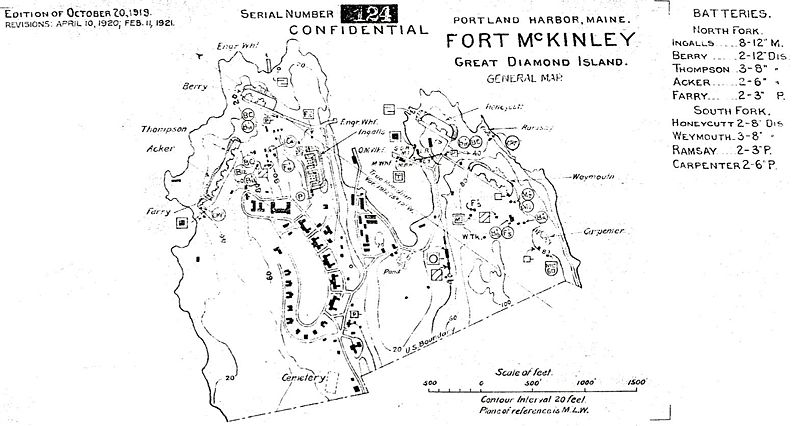

World War II (1941-1945)Fort McKinley expanded even before the outbreak of World War II. In 1940, the peacetime draft was instituted and a massive construction program began on military posts to accommodate the draftees. Construction at Fort McKinley in 1940-1941 added six temporary enlisted barracks, one temporary officers barracks, two mess halls, two admin buildings and two recreation buildings. This modest buildup increased the post capacity to 62 officers, 18 married NCOs, 1438 enlisted men and 25 animals in Jun 1941. The post remained fully garrisoned throughout the war. At the beginning of World War II nearly all the Endicott Period gun batteries on Fort McKinley were obsolete. Four of the batteries were deactivated in 1942 and two more were deactivated in 1943. Only Battery Carpenter remained active throughout the war. No new World War II gun batteries were built on Fort McKinley. The abandoned Battery Weymouth and Battery Honeycutt were used to store the explosives (T.N.T.) used in the underwater mines for Portland Harbor during the war. The post was abandoned by the U.S. Army in 1947 and transferred to the U.S. Navy 17 Nov 1954. The U.S. Navy reported the site surplus to the GSA on 15 Jun 1961 and the GSA sold it to a private party 22 Nov 1961.
Current Status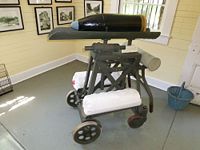 Mostly private property on Great Diamond Island in Casco Bay, Cumberland County, Maine. Access to the Island is by Casco Bay Ferry or private boat. The north end of the island houses Fort McKinley and is now known as Diamond Cove and that is the name of the ferry stop. The Casco Bay Ferry line departs from the Casco Bay Ferry Terminal at Commercial and Franklin streets on the Portland Waterfront. The majority of the post buildings have been restored, repurposed and are now occupied. The major exceptions are the double barracks and the hospital which remain in rough shape. The PX/Gym has been wonderfully restored and functions as a community center. The gun batteries are mostly overgrown and in bad shape. There is no internal access to most of the gun batteries although most can be viewed from the roads.
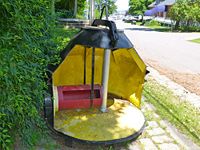 The Fort McKinley Museum runs a 90 minute golf cart tour of the post and some of the gun batteries and this is the best way to get a quick view of the fort structures. Call ahead for reservations, operates only during the summer season. The museum has some great displays including a cutaway of a harbor mine and an ammunition truck complete with a shell and powder bag replica. They also have a great DVD with before and after pictures of the post buildings.
Sources:
Links: Visited: 2 Jul 2012
| |||||||||||||||||||||||||||||||||||||||||||||||||||||||||||||||||||||||||||||||||||||||||||||||||||||||||||||||||||||||||||||||||
